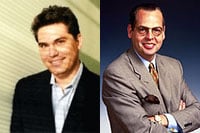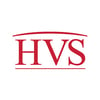Making HR a Strategy and Profit Center in 2009

Accessible Solutions to Current Challenges…
20|20 Assessment™ partners with some of the most successful and respected brands in the service industry – for example, Regent Hospitality Services, Mandarin Oriental, Orient-Express Hotels, Trains & Cruises, Heartland Brewery, Paragon Gaming, Royal Caribbean Cruises, Marriott Courtyard, Taj Hotels, HVS, Finish Line, Emaar, Banyan Tree, Occidental Hotels and Qdoba. Below we present ten simple but cost-effective strategies based on 20|20’s work with such clients coupled with its leading-edge research and decades of expertise in the industry. The strategies were also vetted for practicality and effectiveness by a leading industry insider. These are more than just ideas for contingency planning; these are best practices that can help make your organization stronger and more productive in any economic environment.
The Specifics…
Tip #1: “Do” diligence, not due diligence. Rather than just documenting a “nice to have” selection process on paper, make it a business priority to consistently use a three-pronged, due diligence program for recruitment consisting of a Skills Assessment, Structured Behavioral Interviewing and Reference Checking. This approach seems time and resource intensive – and it might be to some extent – but the resources invested on the front end will pay substantial dividends down the road. A bad hiring decision can be immensely expensive: the cost of the recruitment, training costs, severance pay, loss of productivity, impact on morale and the cost of re-hiring. Studies have shown that even for low-level positions a failed hire costs a company double the person's salary. At higher levels, the cost can be six times the salary.
Tip #2: Harness internal talent to streamline human capital management and organizational development. There are two aspects to this principle. First, use an employee referral system to help identify and attract top talent. Your employees can be a highly effective means of sourcing candidates using either a monetary or non-monetary incentive program. Second, organizations can leverage their existing talent in new ways. For example, every employee has “hidden” strengths and resources that can greatly benefit a company and reduce its dependency on third-party providers. By taking the time to conduct an inventory of employees’ skills and interests, an organization can produce a resource catalog from which all departments or assets can draw upon for cost-effective and efficient help as needed. This also benefits employees by offering them new opportunities to hone skills and enhance their employability and visibility in the company.
Tip #3: Telecommuting. Companies can save time and money by expanding their notion of the traditional workplace to a “workspace.” This is where telecommuting comes into play. For example, a given employee may be a “morning person” yet that energy and enthusiasm may be wasted on a commute into the office. Instead, the periodic telecommute for either part or all of a day can actually increase productivity and hence profitability. Of course, an employee must have discipline in order to be an effective telecommuter. An internal 20|20 Assessment™ study of telecommuters revealed that those most likely to be disciplined and effective showed high scores across ethical awareness, team building and service orientation.
Tip #4: Employees have market intelligence. Employees are strategically placed to notice business issues and customer issues that managers with a higher level focus can miss. Organizations should tap into the knowledge gleaned by its teams. Two effective practices are a quarterly or bi-annual Employee Opinion Survey (one that focuses on both employee engagement and business practices) and a structured method of knowledge transfer for exiting employees. Exiting employees should be courted before their departure date, because often they have streamlined or outright improved processes related to their jobs. Remember that knowledge lives in individuals, as well as in work communities. Capturing individual knowledge and information benefits the entire organization, not just that employee’s replacement.
Tip #5: Employee retention equals money retention. Employee training and professional development doesn’t cost, it pays. Customer satisfaction actually follows from employee satisfaction and engagement. Now more than ever, employee loyalty and performance hinge on perceived job security and future employability. Training and coaching initiatives drive retention by feeding these crucial variables. Training and coaching can be done in-house, such as with mentoring programs, and be used as a form of compensation. A recent survey found that 87% of responding workers viewed special training as a positive incentive, and it appeared most meaningful to employees with postgraduate education.
Tip #6: Promote and reinforce a culture of “doing the right thing.” Noted management expert Peter Drucker says that "doing the right thing is more important than doing things right." Doing the right thing is effectiveness; doing things right is efficiency. Focus first on effectiveness (identifying what is the right thing to do), then concentrate on efficiency (doing it right). All other things being equal:
- Focus on opportunity
- Focus on the future, not the past
- Focus on priorities that support your values
- Focus on long-term fixes rather than the "quick fix."
- Focus on problem preventing rather than problem solving
- Focus on system-wide solutions rather than a local solution
- Focus on high-impact priorities that matter to many people
- Focus on breakthroughs rather than perfecting the status quo
- Focus on feeding your elephants (big important stuff) and starving the ants (trivia)
Tip #7: Learn and live the 80/20 rule. 19th-century Italian economist Vilfredo Pareto's rules states that 80% of all that happens at work is really the result of 20% effort. For example, 80% of the dollar value of an inventory is often found in 20% of the items. 80% of all telephone calls come from 20% of the callers, or 80% percent of meals ordered in a restaurant come from 20% of the items on the menu. With your goals, you can be 80% effective by achieving 20% of your goals. If you have a daily to-do list of ten items, you generally can expect to be 80% effective by successfully completing only the two most important items on your list.
Tip #8: Multi-tasking kills productivity. Though developed as a means of combating the ever increasing complexity of life, multi-tasking often results in perpetual oscillations between starting and stopping without ever completing a single task. Time-blocking on the other hand, allows employees to start, focus and finish. Time-blocking involves grouping daily tasks into a handful of categories and assigning each category a time to be worked on. Time blocking restores an employee's control over their working hours and promotes efficiency and proper prioritization.
Tip #9: Reconsider and restructure internal touch points. Following from the above, consider reducing the number of face-to-face meetings. Ask yourself if a meeting is absolutely necessary or will a phone call do just as well? VOIP technologies like Skype and Voipbuster (“google” these names to find out more) allow conference calls to be conducted at little to no cost – even among team members in worldwide offices or who are telecommuting. However, if a face-to-face meeting is a must, try a “standup meeting” in which participants stand rather than sit. This will help to ensure that important issues are addressed and idle time is avoided.
Tip #10: Feed the elephants and starve the ants. Revisit and streamline your internal practices to reduce obvious and innocuous time wasters that hinder productivity and profitability. Look out for these common roadblocks –
External Time Wasters
- Telephone interruptions
- Unscheduled visitors
- Socializing
- Lack of information
- Excessive paperwork
- Communication breakdown
- Lack of policies and procedures
- Lack of competent personnel
- Red tape
Internal Time Wasters
- Procrastination
- Failure to delegate
- Unclear objectives
- Failure to plan and set priorities
- Crisis management
- Poor scheduling
- Lack of self-discipline
- Attempting to do too much at once
- Lack of relevant skills
Customizing the Specifics…
Of course, many other specific strategies can be added to this arsenal, depending upon your needs and your segment of the service industry (e.g., lodging, gaming-casino, travel-tourism, healthcare, retail and food-beverage). Case in point – Regent Hospitality Services takes advantage of four other tactics that serve as an excellent model for hospitality-oriented companies:
Tip #11: Promote emotional intelligence coupled with situational leadership. Hire and retain leaders who are able to maintain perspective in talent management. For example, upcoming and established managers often misunderstand the level of line associates’ lifestyles and do not provide adequate experiences. For example, a $69.00 associate rate for travel seems like a benefit “on paper” yet most line associates cannot afford the travel. Regent therefore makes a hotel stay part of the orientation program, so all associates plus one guest may experience an overnight stay with dinner a movie and breakfast, and then, when the actual training focuses on guest service, there is relevance there.
Tip #12: Research and retrieve hidden resources. In certain parts of the country there are ETP Programs available whereby the State actually reimburses the hotel organization for training your associates. The second author’s [J.G.] properties have collected as much as $100,000 per annum for this initiative.
Tip #13: Bring the classroom to the employees. Every hotel must have a dedicated training room or learning center for all associates to use, complete with a PC and internet access for online courses. In the evening hours, the organization can team up with a community college and offer classes for neighboring hotel associates.
Tip #14: “Engaged” employees will “engage” customers. For example, as standard practice, Regent invites line associates to go on sales calls. Nothing is more powerful to have a housekeeper state the cleanliness of the room and the cook asking for the traveler’s favorite meal and the bartender for their favorite drink. This approach is so powerful that for one professional there has neither been a rate negotiation nor a lost contract. Imagine in a quarterly all associate meeting applauding those line associates who contributed to a sales contract with more than 1000 room nights. The impact on retention and motivation to increase productivity is unbelievable.
Moving Ahead…
These tips go beyond best practice tactics for enhancing short-term productivity; it is about establishing and reinforcing a culture of thinking and working smarter and strategically. In The War for Talent, McKinsey and Company noted that “talent is the most under-managed corporate asset of the past two decades.” It is astonishing this shortcoming persists since these authors found that “talent driven companies of the Fortune 500 experienced nearly 82% greater profit than their competitor.” Down markets remind us that talent management is not a business luxury, it is a business lifeline.
About the Authors
For a free consultation on applying customized strategies discussed in this article to your business, contact:
20|20 Skills™ Assessment
+1 516 248-8828 ext 264
[email protected]
About HVS: Established in 1980, HVS experts literally “wrote the book” on how to value hotels, shared ownership products, restaurants, and more. Hotel owners, operators, lenders, banks, and management companies all turn to HVS as the respected authority on hospitality. We possess detailed knowledge and experience in the markets where we have a presence, and in the regions in between. Whatever the real estate or consulting need, HVS associates possess experience in a wide range of hospitality and operational disciplines. Our entrepreneurial mindset and company-wide philosophy allow us to think as if we were owners and operators ourselves. We know this approach best suits our clients’ needs. Click here for more...
